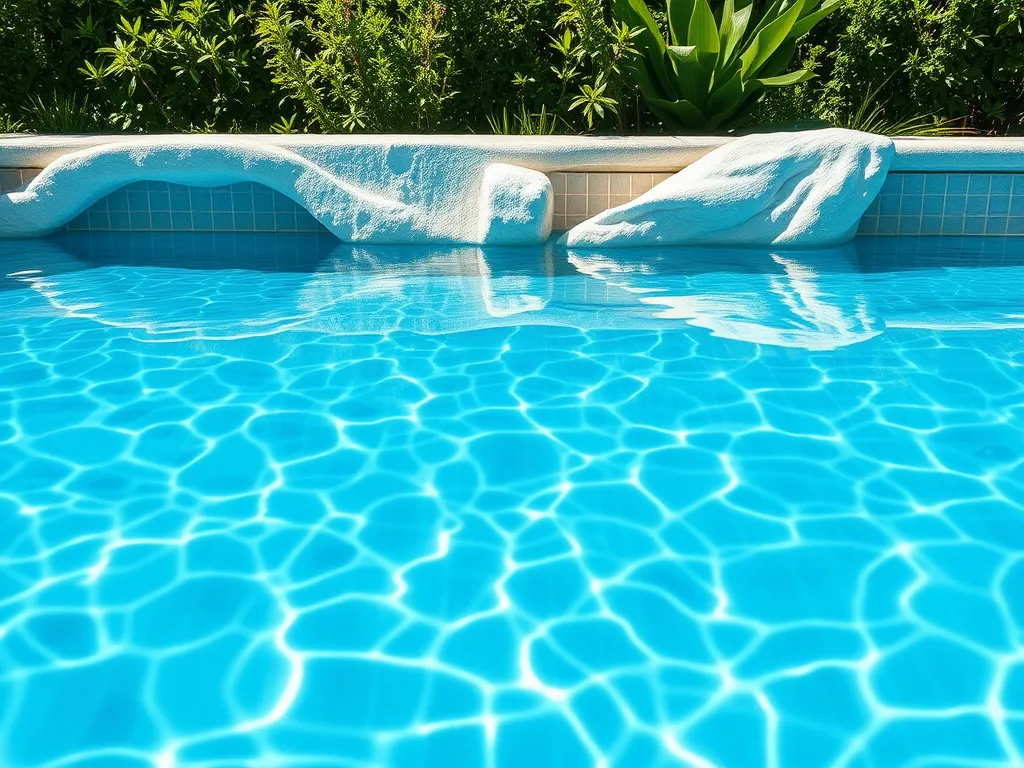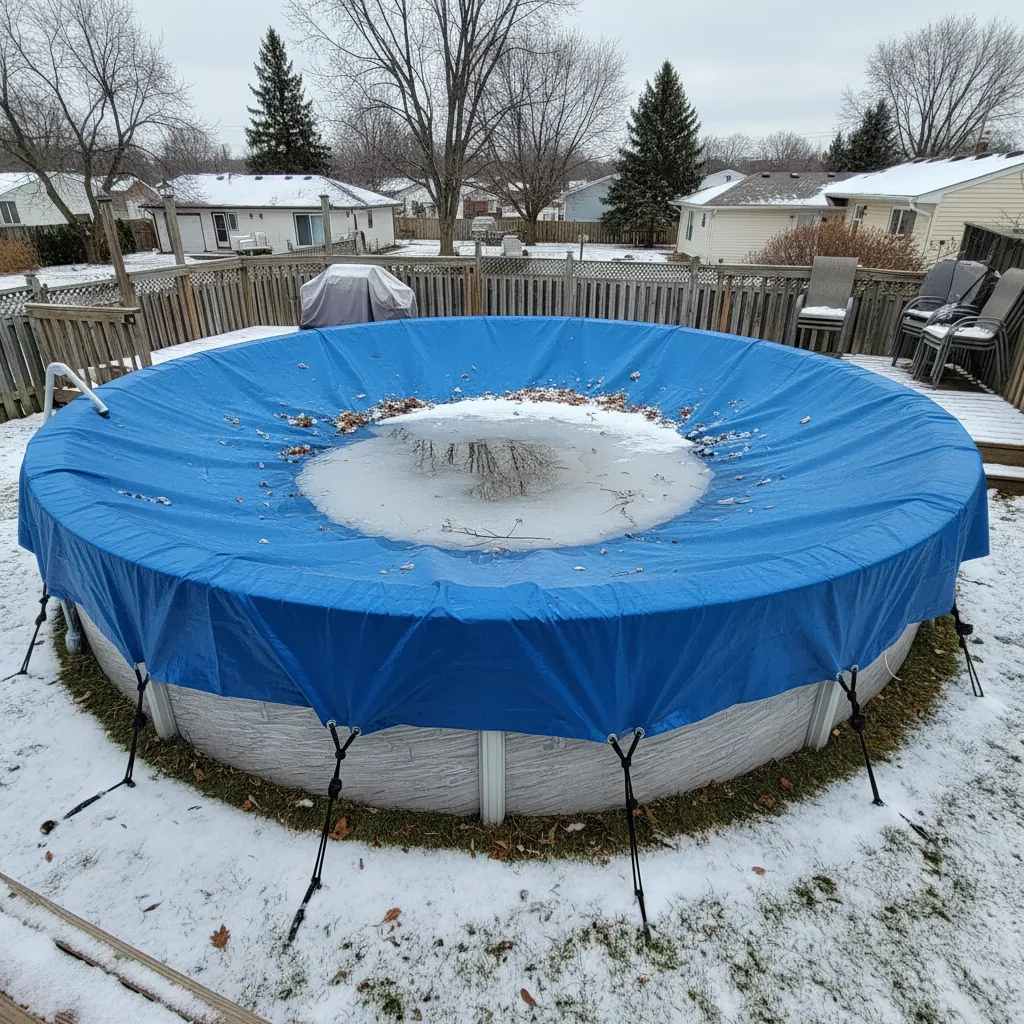Borax Pool Calculator: Easily Balance Your Pool’s Ph
Published on: May 3, 2025 | Last Updated: April 13, 2025
Written By: Rachael Weatherbottom
A borax pool calculator helps you determine how much borax to add to your swimming pool. Borax stabilizes pH levels and improves water clarity. This tool simplifies the math, ensuring you add the right amount without guesswork. Just input your pool details, and get instant results!
Borax Calculator
- Enter your pool’s total volume in gallons
- Test your water and input current borax level
- Set your desired borax level (50-80 ppm is typical)
Always wear gloves when handling borax. Retest water after 24 hours.
Crucial Winterizing Products
"The all-in-one solution for a guaranteed clear spring opening."
All-in-One Closing Chemical Kit
Winter demand is high - check stock
"The 'set & forget' option. This is the easiest winterizing I've ever done."
Simple 3-in-1 Winterizing Balls
Winter demand is high - check stock
"Invest once to protect your liner and prevent a swamp in the spring."
Heavy-Duty Winter Pool Cover
Winter demand is high - check stock
Factors Influencing Borax Requirements for Pool Ph Adjustment
Balancing pool water chemistry with borax requires precision. Multiple variables determine the exact amount needed to achieve desired pH levels. Ignoring these factors risks overcorrection, equipment damage, or ineffective results. To ensure proper balance, using tools like a pool acid demand calculator can be very helpful. This calculator provides accurate measurements to maintain safe and clear pool water.
Pool Volume and Current Ph Level
Total water volume directly impacts borax dosage. A 15,000-gallon pool needs 1.5 lbs of borax to raise pH by 0.1 units. For pH below 7.2, larger quantities are necessary. Always test with a digital pH meter or reagent-based kit before application. For example: Adding borax to your pool helps maintain a stable pH level, making your swimming experience more enjoyable.
- Current pH of 7.0: Requires 4.5 lbs per 10,000 gallons to reach 7.4
- Current pH of 7.4: Requires 1.2 lbs per 10,000 gallons to reach 7.6
Desired Ph Increase
Each 0.1 pH unit increase demands 1.3 oz of borax per 1,000 gallons. Target ranges should stay between 7.4-7.6 to prevent scaling or corrosion. Exceeding 7.8 risks calcium carbonate precipitation. Use incremental adjustments—add 50% of calculated borax, wait 4 hours, then retest. Keeping the right alkalinity is key for pool water balance. A pool alkalinity calculator can help you figure out the precise amounts needed to maintain optimal levels.
Existing Borate Levels
Pools with borate-based sanitizers (like some saltwater systems) may already have 30-50 ppm borates. Adding borax without testing can push concentrations above the 80 ppm safety threshold. Test borate levels using strips like LaMotte 3102 before treatment. Proper sanitation is essential for keeping pools clean and safe. Choosing the right pool sanitizer can help maintain balanced water chemistry.
Water Temperature and Alkalinity
Warm water (above 85°F) accelerates pH drift, requiring 15-20% less borax than cooler pools. Total alkalinity (TA) below 80 ppm reduces borax efficacy. For TA under 100 ppm, pre-adjust alkalinity with sodium bicarbonate to 120 ppm before pH correction.
Guidelines for Maintaining Optimal Borax Levels in Pool Water
Consistent borax management prevents pH rollercoaster effects. Follow these protocols for sustained water balance.
Testing and Monitoring Borate Concentrations
Use borate test strips weekly during swim season. Ideal borate levels are 30-50 ppm. Above 80 ppm, water becomes corrosive to plaster and metal fittings. Below 20 ppm, pH stabilization benefits diminish. Record results in a logbook to track trends. Maintaining proper borate levels is key for pool care. Borate pool treatment can help stabilize pH and reduce algae growth.
Adjusting Borax Dosage Based on Seasonal Changes
- Summer: Higher bather loads and UV exposure increase pH drift. Boost borax by 10% monthly
- Winter: Reduced usage allows 25% dosage reduction in covered pools
- Rain Events: Each inch of rainfall dilutes borate levels by 3-5 ppm in a 20,000-gallon pool
Also See: Pool Auto-fill Calculator: Determine Your Needs

Integrating Borax With Other Pool Chemicals
Borax doesn’t operate in isolation. Its performance is tied to other chemical interactions.
Interaction With Chlorine and Stabilizers
High cyanuric acid (CYA) levels above 70 ppm reduce borax’s pH buffering capacity. For every 10 ppm CYA increase, add 5% more borax. Chlorine shock treatments temporarily lower pH—wait 24 hours after shocking before borax application. Using borax can help lower alkalinity in water. This makes it a useful tool for maintaining balanced pool chemistry.
Combining With Muriatic Acid for Ph Control
Use a 3:1 borax-to-acid ratio when tackling both low pH and low alkalinity. Example:
- Add muriatic acid to lower pH to 7.0
- Wait 2 hours, then add borax to raise pH to 7.6
- Result: pH stabilizes at 7.4 with improved alkalinity buffer
Borax Dosage Guidelines Based on Pool Size and Ph Shift
| Pool Volume | pH Increase Needed | Borax Required | Cost (USD) |
|---|---|---|---|
| 10,000 gal | 0.2 units | 2.6 lbs | $4.50 |
| 20,000 gal | 0.3 units | 7.8 lbs | $13.20 |
| 30,000 gal | 0.4 units | 15.6 lbs | $26.50 |
*Prices based on $1.70/lb for commercial-grade borax.
Safety and Storage Practices for Pool-grade Borax
Technical-grade sodium tetraborate decahydrate (99% purity) is recommended. Avoid laundry borax containing surfactants.
Handling Precautions
- Wear ANSI-approved goggles and nitrile gloves during handling
- Never mix borax with trichlor tablets—creates toxic chlorine gas
- Pre-dissolve in a 5-gallon bucket before broadcasting
Proper Storage Solutions
Store in airtight containers away from acid vapors. Shelf life is 2 years if kept below 80°F. Label containers with purchase date and batch number.

Troubleshooting Common Borax Application Issues
Overcorrection Of Ph Levels
If pH exceeds 7.8 after borax addition:
- Add 12 oz muriatic acid per 10,000 gallons
- Run pump for 6 hours
- Retest and repeat if needed
Borax Dissolution Challenges
Undissolved borax granules indicate:
- Water temp below 60°F: Use warm water to pre-mix
- High calcium hardness: Flocculant may be needed before application
Benefits Of Maintaining Proper Borax Levels in Swimming Pools
Ph Stability
Borates create a buffer zone reducing daily pH swings from 0.4 units to 0.1 units. This extends heater element lifespan by preventing acidic corrosion.
Algae Inhibition
Borax at 50 ppm inhibits algal growth by disrupting cellular metabolism. Reduces chlorine demand by 15-20% in outdoor pools.
Enhanced Water Clarity
Borates sequester metal ions, preventing staining. They also optimize filter efficiency by reducing dissolved solids.
Frequently Asked Questions About Borax in Pool Maintenance
Can Borax Replace Other Ph Increasers?
Yes, but unlike soda ash (sodium carbonate), borax doesn’t increase total alkalinity. Use when TA is already 80-120 ppm.
How Often Should Borax Be Added?
Every 4-6 weeks during peak season. Test borate levels monthly—evaporation causes concentration creep.
Is Borax Safe for Vinyl Liners?
At proper levels (under 80 ppm), yes. Avoid direct application on liner surfaces—always pre-dissolve.
For detailed chemical interaction models and real-time adjustment scenarios, visit My Pool Calculator.
Additional Resources for You:
- Tamminen, T. (2019). The Complete Pool Manual for Homeowners: A Step-by-Step Maintenance Guide. New York, NY: Skyhorse Publishing.
- Borate Dose Calculation Charts for pools • Pool Chemistry Training Institute
- Pool Borate Calculator – Quick Easy Suite of Pool Chemical Calculators
- PoolMath
- Adjust Borate Level – Free Pool Calculator
A pool care geek who’s been testing water chemistry since she was tall enough to reach the skimmer.
Chemical Dosage, Pool Calculators





